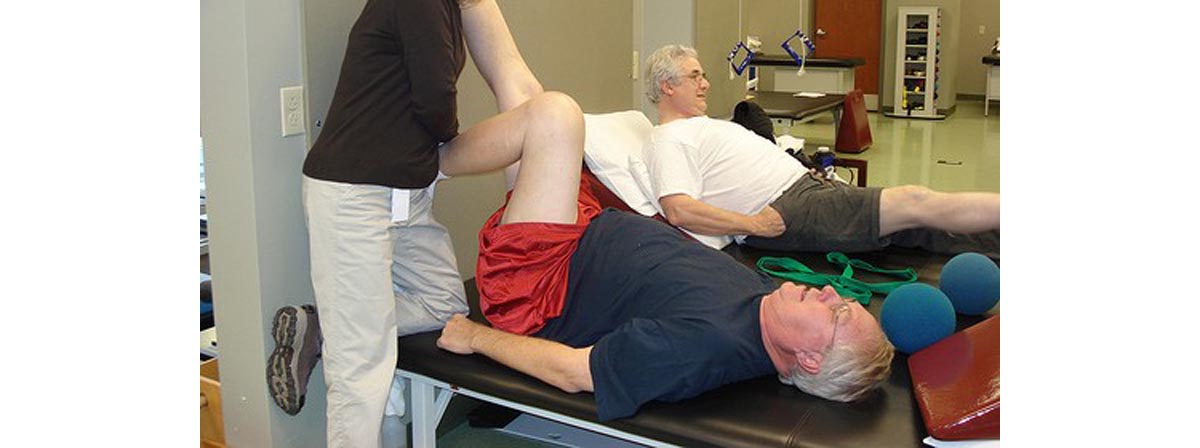Table of Contents
After low back, neck and foot pain, knee pain is one of the most common and pervasive ailments there is. Knee pain plagues walkers, hikers, fishermen, joggers, soccer players, footballers, basketballers, skaters… and while everyone knows that exercise is the thing to do, the wrong kind of exercise can actually make your knee pain worse.

The first thing I want to do is distinguish between knee pain caused by wear and tear or inappropriate use and knee pain caused by arthritis or other similar chronic medical disorders. If your knee pain is arthritic, talk to a doctor and proceed with this or any other exercise plan with great caution. (That said, exercise can be effective for treating arthritis too; you just need your doctor's green light first!)
We’ll leave the feet out of it for now and focus on the most common causes of knee pain originating in the hip. The major muscles that affect the knee this way are the glutes, the iliotibial band and the quadriceps. The glutes form the buttocks, but some of the fibers of the glutes continue down the outside of the leg, playing a part in abducting the leg (which means moving it away from the center line) and in externally rotating the femur, turning the knee out from the center line. The iliotibial band, sometimes referred to as the ITB, is a tendinous muscle that connects the tibia, otherwise known as the shin bone, with the hip. It also tends to abduct and externally rotate the leg.
This can result from the hips or from overdepronation from the feet, but the problem can be partially addressed by working on the hips even if it originates in the feet.
All of this may feel like a little too much anatomy to swallow all in one go, but it’s really pretty simple: the leg has evolved to function with the knee more or less in a forward-backward plane. If it turns in or out, you’re going to have a problem, and pain will be the primary symptom.
Part of that problem comes from the fact that the knee doesn’t cope well with shearing force or rotation. Shearing force is when you push one part of a structure in one direction and another in the opposite direction. If it can, the structure will escape the force by falling over, or by bending. But the knee joint can’t bend in two places at once and it doesn’t bend at all sideways. Pressure applied in this way damages the ligament that holds the knee joint together, resulting in potential for damage down the line, and can injure the joint directly. The result, again, is pain.
Common Causes of Chronic Knee Injuries
A common way for knee pain to develop is through incorrect squatting. While the squat is a fairly simple movement, doing it with internally rotated femurs can cause torsion force between the femur and the bones of the lower leg – essentially, every time you squat, you’re tearing your knee apart. The downward force traveling through the buckled knee applies shear, too.
Another cause of chronic knee injuries is common to soccer and basketball players: sudden changes of direction characterize both sports, and the forces that travel through the knee when you change direction suddenly can be many times your body weight. If that happens and the angle of the knee is less than optimal, you can tear some tissues, or the high forces involved can make them tighten and swell, subtly deforming the movements of the knee and adding a chronic component to your acute injury.
- Photo courtesy of GoingLikeSixty.com by Flickr : www.flickr.com/photos/25225730@N00/4176973005/
- Photo courtesy of adrian valenzuela by Flickr : www.flickr.com/photos/adrianv/4157275393/

